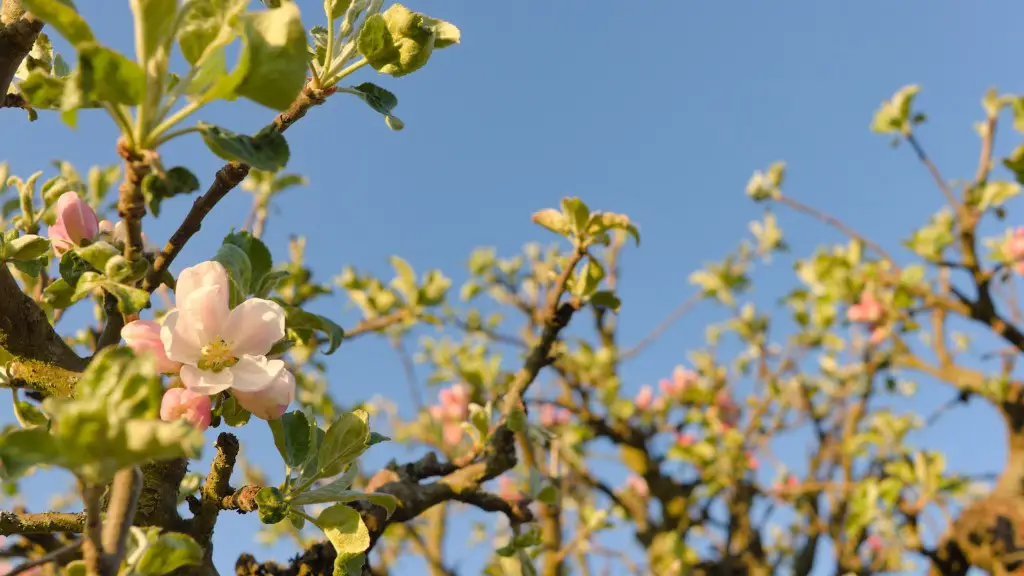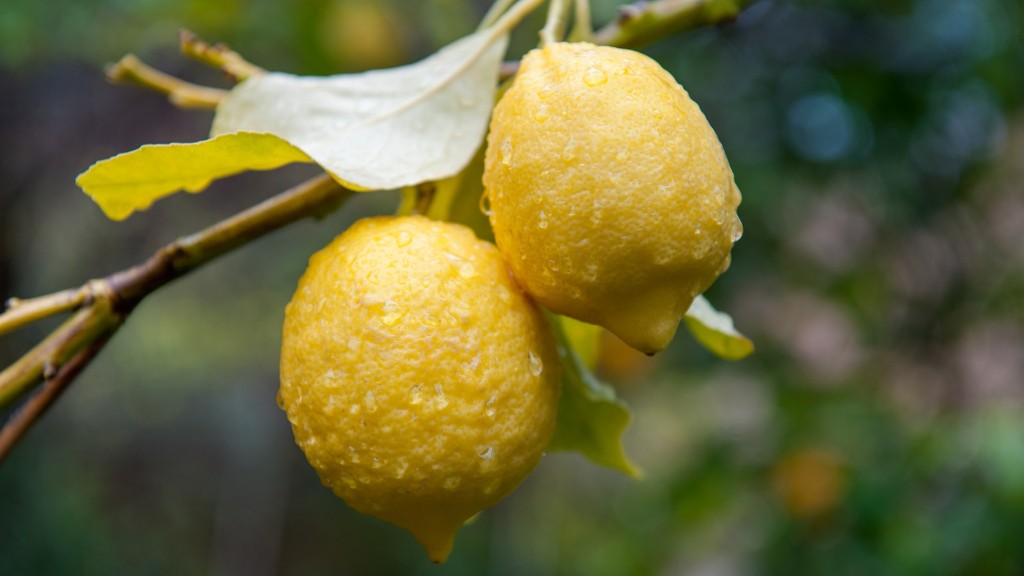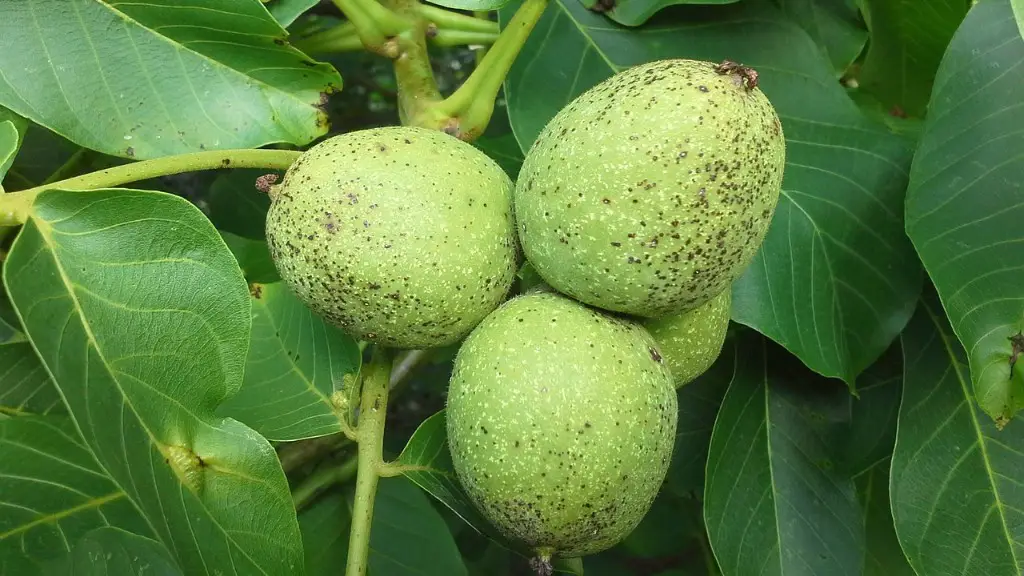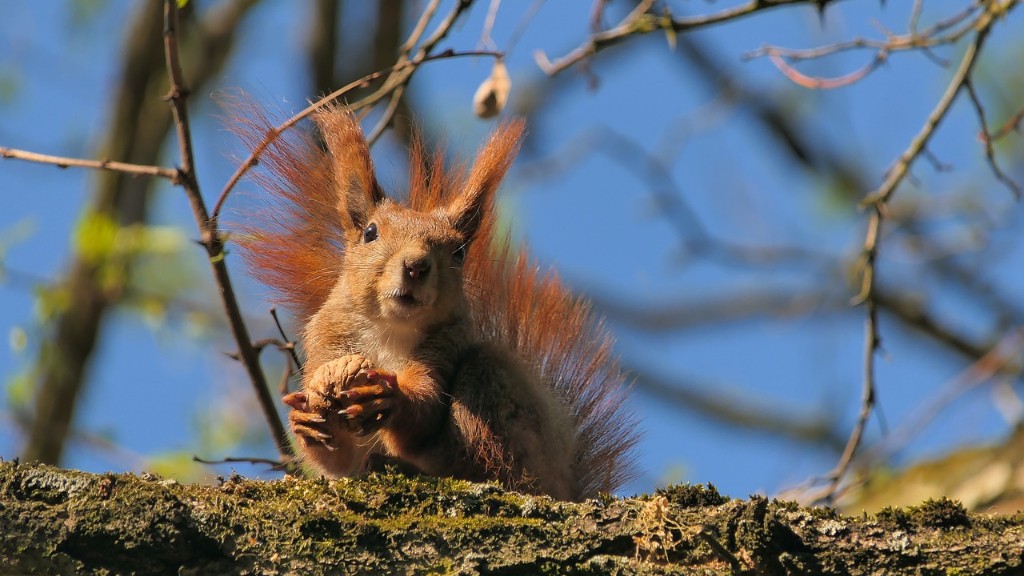Has your apple tree suddenly become unproductive and had visible signs of declining health? If so, what is wrong with your apple tree and what can you do to fix it? This article will explore common issues that can plague an apple tree and suggest strategies to restore a tree’s vigor.
The first and most obvious sign of an ailing apple tree is a lack of fruit production. This can be due to many possible causes, such as undernourishment, improper pollination, disease, or infestations. Lack of fruit production could also be a sign of an early closure of the tree’s flowering period or of a young tree that has yet to reach full maturity.
Another indication of poor health in an apple tree is yellowish or spotted foliage. Both symptoms are most likely caused by fungal diseases, like powdery mildew or apple scab. A tree’s foliage may also take on a scorched or burned look, or be accompanied by growths along the branches and trunk. These symptoms could indicate an infestation from aphids or scale insects.
When an apple tree is suffering from a lack of nutrients, it can show visible signs of distress. These signs can include yellow or scorched leaves or branches, weak growth, and a lack of flowers or fruit. To address this problem, the tree should be fertilized with a balanced fertilizer appropriate for its species.
Apple trees that are not receiving adequate amounts of water will quickly suffer from water stress. Most often, this issue can be resolved by increasing the amount of water being applied either through rain or manual watering. If water stress is not addressed promptly, it will lead to more serious damage including branch dieback and a decreased rate of fruit production.
Several types of pests can attack an apple tree, causing leaves and fruit to become discolored and distorted. For example, coddling moths and apple maggots eat away at the tree’s tender tissue, leaving holes in the fruit and stunted growth of new leaves. If an apple tree is infested, it should be treated immediately with a pesticide to minimize any damage.
Finally, an apple tree may also begin to decline in health due to age or poor pruning practices. Over time, a tree may naturally produce fewer flowers and fruit, and may also become more prone to disease. Proper maintenance such as regular fertilization and pruning can help to prevent a tree from declining due to age.
Poor Soil Conditions
Poor soil conditions can lead to an apple tree’s health declining over time due to deprived nutrition. The major concerns that can arise include poor drainage, low fertility, and an excess of salts or toxins in the soil. Poor soil conditions can lead to stunted growth, weak root systems, and yellow foliage.
To address this problem, an analysis of soil properties should be conducted. Samples should be sent to a soil testing laboratory so that appropriate corrective measures can be taken. Additionally, the tree should be fertilized by an organic fertilizer formulated for apple trees that contains essential elements such as nitrogen and phosphorus.
Organic matter should be added to the soil in the form of compost to help improve the soil’s porosity and water-holding ability. Adding organic matter to a soil provides important nutrients to the tree, and helps to buffer the salts and toxins found in the soil. Other mulches and organic matter can be applied to help further improve soil structure and drainage.
Climate Issues
It is important that any environment an apple tree is planted in provides it with the right amount of sun and air exposure, as well as protection from extreme temperatures. An apple tree can suffer from severe damage if it is exposed to temperatures below 32 degrees Fahrenheit for an extended period of time, or if temperatures rise above 95 degrees Fahrenheit.
If an apple tree is located in an area which experiences this high levels of temperature, it should be planted in a location which provides it with some level of shelter from direct sun exposure, or even from wind. Additionally, this tree should be pruned to increase air exposure, as this will reduce the temperature of the interior of the tree, helping it to survive in hot areas.
To further protect the tree from the heat, the area around the tree should be mulched. Mulching helps to insulate the grind and soil so that temperatures remain more consistent and are not exposed to extreme fluctuations. Additionally, mulching around a tree helps to retain moisture and increase the nutrients in the soil.
Disease Prevention
Many diseases can affect an apple tree, and left untreated, they can lead to the tree’s final demise. While many fungal diseases can develop during prolonged wet conditions, others, such as blossom wilt, can occur from situations which are beyond a gardener’s control. Thus, in order to prevent an apple tree from becoming diseased, proper preventative care should be taken.
The best preventative technique for most fungal diseases is to add organic matter to the soil to improve its drainage. Additionally, any affected branches should be pruned off in order to prevent the disease from spreading further. Mulching can also be employed as a preventative measure as it helps to retain moisture and keep the soil cooler, thus preventing fungal diseases from occurring.
Finally, pruning is important in order to keep the tree’s canopy open and increase the amount of air circulating around the tree. Pruning should occur prior to any buds emerging in order to remove any dead, diseased, or damaged wood. Additionally, pruning can encourage new, healthy growth and stimulate increased fruit production.
Protecting From Pests
Pests are also a common issue that can affect an apple tree’s health. Most pests will feed on the woody tissue of the tree, weakening its branches and leading to a decrease in fruit production. Pests such as apple maggots, scales, aphids, and coddling moths can all negatively affect an apple tree.
In order to prevent infestation from pests, a routine integrated pest management (IPM) program is recommended. This program involves the use of different cultural, chemical, and biological strategies in order to identify, monitor, and reduce the levels of harmful pests. Additionally, surrounding the tree with a protective barrier can help reduce the exposure it has to pest infestation.
Organic insecticides can also be applied as part of an IPM program. Natural predators such as birds, ladybugs, and lacewings may be encouraged to live in the vicinity of the apple tree in order to naturally control and reduce pest populations. Further, a light horticultural oil can be used as a contact control insecticide to help deter pests from reproducing or damaging the tree.
Proper Pruning Practices
Regular pruning is another essential practice for taking care of an apple tree. Pruning helps to stimulate new growth, encourage increased fruit production, control size and shape, and increase air exposure around the tree. Pruning should be done at least once each year, preferably during the late winter or fall. All branches that are dead, diseased, or damaged should be removed.
In addition, pruning should be used to remove any branches that are too close together and to reduce any excess shading. When pruning an apple tree, it is important to avoid over-pruning, as this can negatively affect the tree’s health and reduce fruit production. An experienced arborist should be consulted if extensive pruning is needed.
Fertilizing an Apple Tree
Fertilizing an apple tree is important for promoting strong and healthy growth and aiding in fruit production. The type of fertilizer that should be used is dependent on the species of apple tree, as different varieties have different nutrient requirements. A balanced 8-2-2 or 8-8-4 fertilizer should be applied at the base of the apple tree in late winter or early spring before the buds have broken.
Organic fertilizers are also an excellent choice for an apple tree. Compost, in particular, can provide essential nutrients to the tree, and can be applied as a top-dressing or incorporated into the soil. Additionally, various natural fertilizers such as sea kelp, fish emulsion, and mined minerals can be applied to provide the tree with its nutrient needs.





